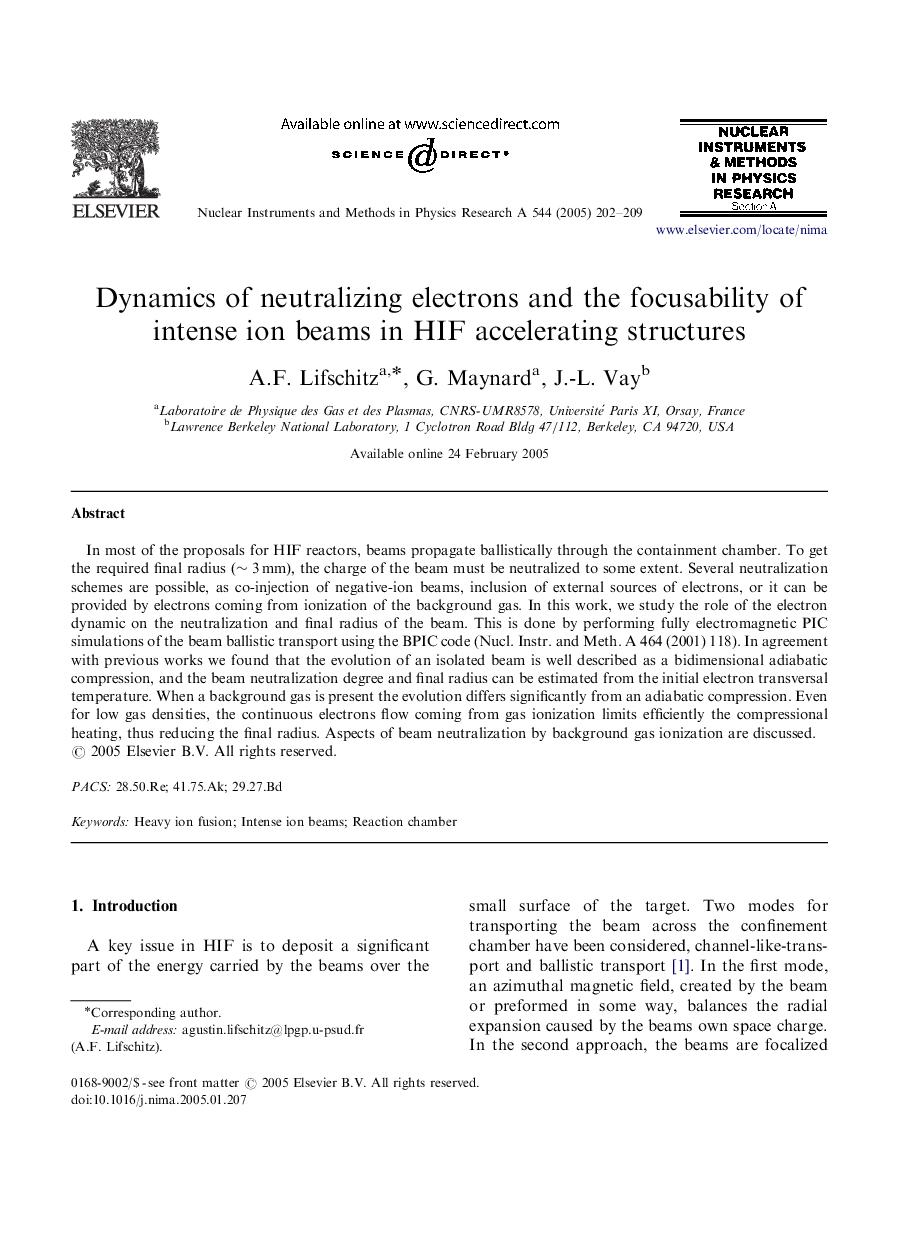| Article ID | Journal | Published Year | Pages | File Type |
|---|---|---|---|---|
| 9845461 | Nuclear Instruments and Methods in Physics Research Section A: Accelerators, Spectrometers, Detectors and Associated Equipment | 2005 | 8 Pages |
Abstract
In most of the proposals for HIF reactors, beams propagate ballistically through the containment chamber. To get the required final radius (â¼3mm), the charge of the beam must be neutralized to some extent. Several neutralization schemes are possible, as co-injection of negative-ion beams, inclusion of external sources of electrons, or it can be provided by electrons coming from ionization of the background gas. In this work, we study the role of the electron dynamic on the neutralization and final radius of the beam. This is done by performing fully electromagnetic PIC simulations of the beam ballistic transport using the BPIC code (Nucl. Instr. and Meth. A 464 (2001) 118). In agreement with previous works we found that the evolution of an isolated beam is well described as a bidimensional adiabatic compression, and the beam neutralization degree and final radius can be estimated from the initial electron transversal temperature. When a background gas is present the evolution differs significantly from an adiabatic compression. Even for low gas densities, the continuous electrons flow coming from gas ionization limits efficiently the compressional heating, thus reducing the final radius. Aspects of beam neutralization by background gas ionization are discussed.
Related Topics
Physical Sciences and Engineering
Physics and Astronomy
Instrumentation
Authors
A.F. Lifschitz, G. Maynard, J.-L. Vay,
